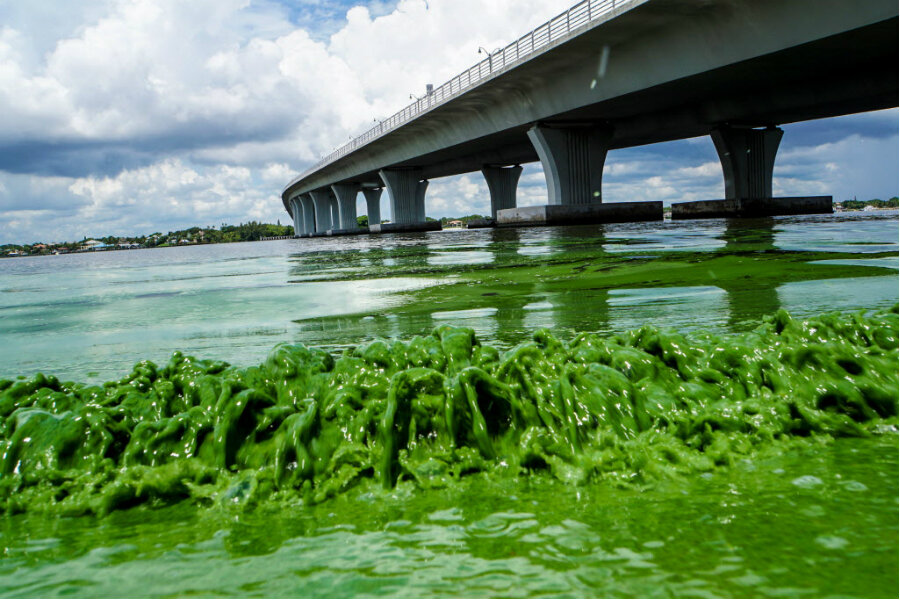What's behind Florida's algae bloom? Satellite photos reveal clues.
Loading...
A toxic algae bloom, so large it is visible from space, has been expanding in Florida’s Lake Okeechobee since May and has spread through the St. Lucie River estuary to the Atlantic Ocean. The algae invasion has made the water unfit for consumption and agriculture and prompted Governor Rick Scott to declare a state of emergency in two south Florida counties, as scientists and politicians dispute just what's to blame.
Satellite photos taken on July 2 by NASA’s Operational Land Imager reveal an expanding patch of single-celled organisms called cyanobacteria (colloquially known as blue-green algae, although it is really a bacteria). The bloom covers approximately 33 square miles of the Lake Okeechobee, which at 720 square miles is the second largest lake completely within the United States, after Lake Michigan.
"Human activities have dramatically increased nitrogen and phosphorus inputs into many rivers and lakes, causing algal blooms that threaten economic and recreational uses of those waters," Hans Paerl, professor of marine and environmental sciences at the University of North Carolina-Chapel Hill Institute of Marine Sciences, told LiveScience.
Pollution, warmer lake water caused by global warming, and changes in agricultural practices, including increased use of nitrogen-fertilizer, have all been found to contribute to blooms such as this one. But a new debate has arisen over whether this bloom was caused by sewage, as well. Organizations such as the The South Florida Water Management District are saying sewage, not runoff from the lake, may be causing the problem.
“We’re not saying there are no pollutants from (agriculture); there are,” Brian Lapointe, a research professor at Florida Atlantic University's Harbor Branch who conducted a study on the effects of sewage on algae blooms in 2015, told the Treasure Coast Palm. “But sewage from septic tanks is a significant contributor, in fact a primary contributor, to nutrients damaging the estuary and the reefs offshore. And it’s not just nutrients: (Septic systems) also contribute bacteria that contaminate the water.”
Other scientists are inclined to disagree, however, saying discharge from Lake Okeechobee is the most significant factor.
"Any major bloom is consistently associated with huge discharges from Lake Okeechobee," Ed Phlips, an algae expert at the University of Florida, told USA Today. "It just makes sense: These are freshwater species of algae, and the discharges of freshwater from the lake is the main cause of low salinity in the St. Lucie estuary." If septic systems were to blame, you could expect blooms to occur consistently, said Dr. Phlips, but they don’t.
This particular bloom occurred following a very wet winter for the state of Florida, after which many water districts chose to drain bodies of water earlier than usual, causing an increase of warm-nitrogen rich water to empty into the lake. NASA satellite images corroborate this version of events, tracking the algae’s movement from the lake, down the St. Lucie Canal, and into the river.
The use of satellite imagery to track blooms in lakes, in addition to just those in oceans, is a relatively new application of the technology, as The Christian Science Monitor reported earlier this week. The project is a result of a partnership between NASA, the US Environmental Protection Agency (EPA), the National Oceanic and Atmospheric Administration, and the US Geological Survey.






